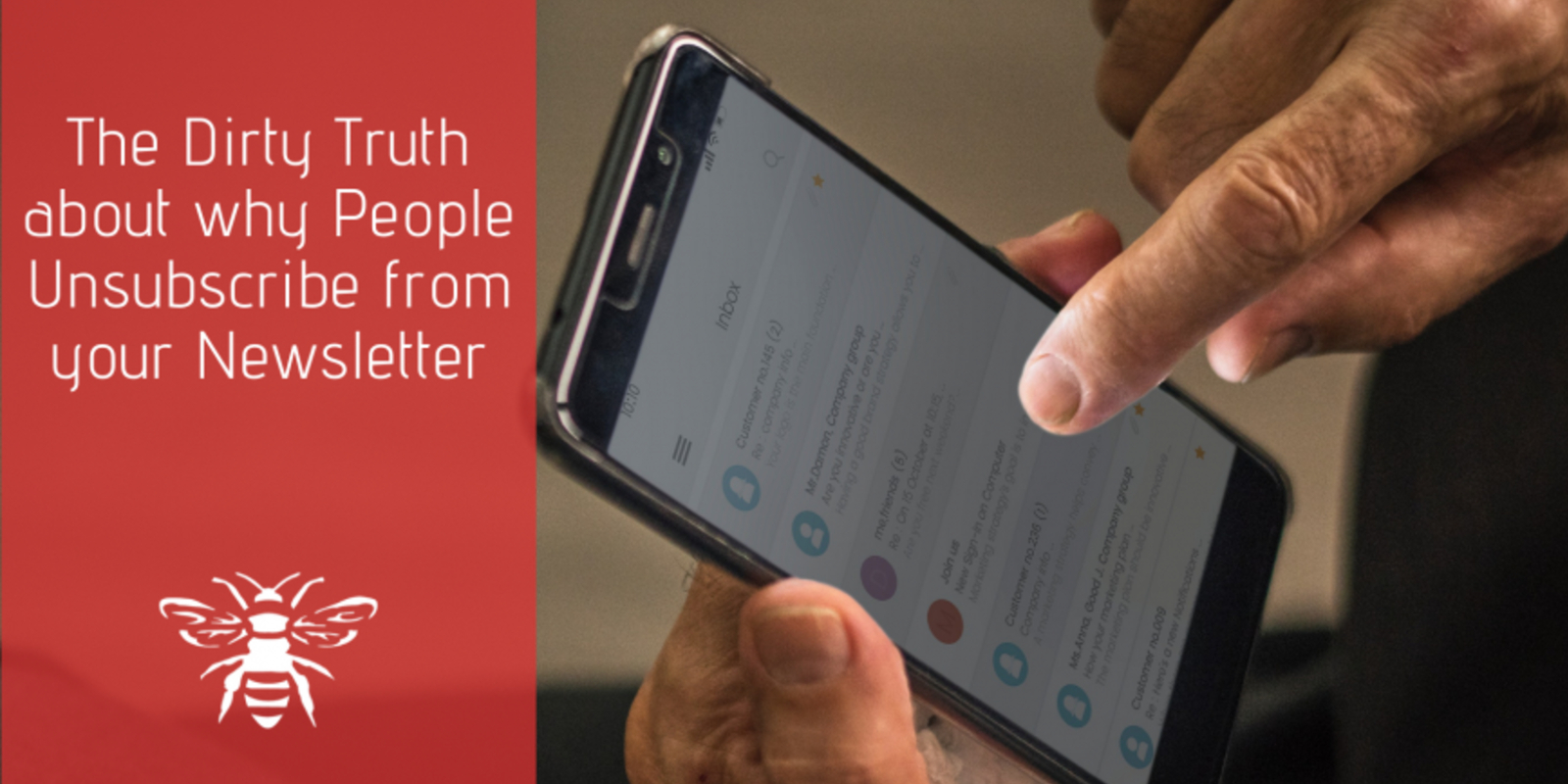Real strategies and examples to help you close the deal.
Pitching marketing automation – When our agency adopted SharpSpring, we were excited about all the “possibilities” that would come along with offering a fully functioning marketing automation solution. How could our clients say no to such a beautiful, robust platform? What we quickly learned was that you need more than just a sexy platform and presentation to successfully pitch marketing automation. While we as marketers might get excited about the endless possibilities that automation offers, what clients are really looking for is a solution that fits their business needs. You need a personalized strategy to provide positive results. Every Client Is Different Think about it like this: It’s Christmas season, and you need to buy gifts for all of your friends and family. You aren’t going to get everyone the same gift, are you? Instead, you’re going to think about each individual person’s needs, wants and interests and then buy your gifts based on that information. The same goes for pitching marketing automation. Every client is different, so what you offer and the way you offer it should always be customized to fit the client’s individual needs. This article explores how to understand the needs of your potential clients and how to package a strategy and demo to successfully pitch and close more marketing automation business.
1. Do Your Homework
![]()
Before going into a pitch, it’s important to know more about your prospects than just what you can find on their websites. Anyone can visit a site and grab surface-level information. Make sure you’re going above and beyond to show them what makes your company different.
Check Out the Prospect
Use web plugins like Ghostery or sites like BuiltWith to find out what software platforms the prospect is using. See if you can identify an email service provider, analytics, or marketing automation pixel. Find any? If so, go to the client’s site and see if you can identify how they’re being used. For example, sign up for a newsletter or download a content piece. If possible, do this a week or two before your pitch. That way, you’ll have a chance to see how they follow up, test any automations they might have, and potentially receive some of the emails they are sending.
Get Some Competitor Intel
Then take it a step further and research the client’s competitors. Visit their sites and repeat the same process. Are they following up with you? Do you receive emails after signing up for a newsletter? If so, what do those emails say? Gather everything you can that might be useful, and then create a list of pros and cons for each of the competitors. If you can identify something that the competition lacks which you can offer or do better, this is a huge opportunity when framing your pitch.
2. Tailor Your Demo
![]() It’s easy to tell your prospects what marketing automation can do for them, but it’s another thing to show it in action. It’s important to tailor your demo so that you’re doing more than just showing the glitz and glamour of the product. Use examples of automations from previous clients, or build entirely new ones before their eyes. Shape your demos around their needs so they can imagine themselves using the product daily.
It’s easy to tell your prospects what marketing automation can do for them, but it’s another thing to show it in action. It’s important to tailor your demo so that you’re doing more than just showing the glitz and glamour of the product. Use examples of automations from previous clients, or build entirely new ones before their eyes. Shape your demos around their needs so they can imagine themselves using the product daily.
 Are they looking to nurture leads? Show them how to create behavioral-based drip campaigns.
Are they looking to nurture leads? Show them how to create behavioral-based drip campaigns.
Do they not have a CRM? Show them how easy it is to take notes, set reminders, and even see the actions that a lead has taken on-site and how they’re engaging with your content. (SharpSpring’s “Life of the Lead” is amazing for this.)
Do they need to track ROI from their marketing campaigns? Show them how easy it is to manage and track their marketing activities, and focus on performance analytics capabilities.
Marketing automation platforms have a lot of features, and it’s easy for a prospect to get overwhelmed by them all. Focusing only on the features that your prospect will need or use will make the platform look simpler in their eyes and will give them the sense that the platform is filling the hole in their business strategy.
3. Don’t Just Pitch Software, Pitch Strategy
The first step for a prospect is to understand what the software can do for his/her business and how much is it going to cost. With all the features of a full-fledged marketing automation platform and a very low buy-in cost, this is where SharpSpring can sell itself. But in order to sell yourself and your agency, you need to understand your prospects’ goals and objectives – whether they are B2B or B2C, whether they are ecommerce or brick and mortar – and you need to have a strategy for achieving them. According to the 2016 Marketing Automation Trends Survey conducted by Ascend2, businesses listed lack of an effective strategy’ as the number one barrier to achieving their marketing automation goals.
![]() This is where your agency comes to the rescue. During your pitch, you should position yourself as an expert in marketing automation, explaining that you have a strategy that will be key to the client’s success and that you’ll play an instrumental role in implementing that strategy. It’s not enough for a business to just purchase a marketing automation platform, go through the two-month implementation process, and then expect its bottom line to skyrocket. Many times when businesses adopt marketing automation, they become overwhelmed and don’t even know where to begin. Your pitch is also a great time to share any information you dug up on the competition while you were doing your homework. Point out the flaws in the the competitors’ strategies, or show an example of something a competitor is doing well and explain how you can do it even better. The prospect is sure to be impressed by the software, but your strategy is where you have the ability to truly wow them.
This is where your agency comes to the rescue. During your pitch, you should position yourself as an expert in marketing automation, explaining that you have a strategy that will be key to the client’s success and that you’ll play an instrumental role in implementing that strategy. It’s not enough for a business to just purchase a marketing automation platform, go through the two-month implementation process, and then expect its bottom line to skyrocket. Many times when businesses adopt marketing automation, they become overwhelmed and don’t even know where to begin. Your pitch is also a great time to share any information you dug up on the competition while you were doing your homework. Point out the flaws in the the competitors’ strategies, or show an example of something a competitor is doing well and explain how you can do it even better. The prospect is sure to be impressed by the software, but your strategy is where you have the ability to truly wow them.
4. Don’t Overpromise and Under-Deliver
Marketing automation can do a lot for your clients, but it’s not going to drive their cars and wash their dogs. While it’s easy to get caught up in all the things marketing automation can do (especially during the pitch), it’s extremely important to focus on what it should do for each client’s unique business needs. By creating a comprehensive strategy, you’ll set realistic goals and keep clients’ priorities in check from the get-go.
Set Realistic Timelines
It’s also important to remember that it can take a while for your clients to start seeing results. You can’t create and implement a foolproof marketing automation strategy overnight. In fact, it could take anywhere from two to six months just to get the system set up. Only once you have everything hooked up – workflows running and systems communicating – will you start to see the benefits. But even after that, it can take time before you start to see tangible results. Patience is key here. For instance, when we began using SharpSpring for one of our clients, a commercial roofing company, we were seeing small wins fairly quickly. It wasn’t until two years into using SharpSpring, however, that the client started to see real, business-changing results. By building out well-developed drip campaigns, the client was able to nurture more than $1 million in revenue, generating a massive ROI. We understand that your clients might not be happy to hear that it can take this much time to start seeing results. Most of the time, they want results as quickly as possible, not two years down the road. In order to manage their expectations (while also keeping them happy), we recommend creating a timeline when pitching your clients.
 Obviously the template will change on a case-by-case basis, but providing a basic timeline will help your clients visualize and focus on their end goals, which is especially important if they are hesitant about the time it might take to see results. Do what you can to manage your clients’ expectations. At my company, one of our “ways of life” is to make realistic promises and then over-deliver, rather than over-promising and under-delivering.
Obviously the template will change on a case-by-case basis, but providing a basic timeline will help your clients visualize and focus on their end goals, which is especially important if they are hesitant about the time it might take to see results. Do what you can to manage your clients’ expectations. At my company, one of our “ways of life” is to make realistic promises and then over-deliver, rather than over-promising and under-delivering.
5. Use the Word “Imagine”
![]() Prospects often have a hard time understanding why they need marketing automation or how it can help them. They think, “I’m already doing a fine job.” Here’s where you explain what we like to call the “hidden gem” of marketing automation. It’s not about the deals they’re winning, but rather the deals they’re not winning. Try framing a situation to a prospective client like this:
Prospects often have a hard time understanding why they need marketing automation or how it can help them. They think, “I’m already doing a fine job.” Here’s where you explain what we like to call the “hidden gem” of marketing automation. It’s not about the deals they’re winning, but rather the deals they’re not winning. Try framing a situation to a prospective client like this:
 Chances are your clients will tell you they don’t have effective processes in place to nurture leads for months and years into the future. This is where lead nurturing comes into the picture. You need to explain to your prospects that with the lead nurturing tools marketing automation provides, they can get their sales teams working more efficiently than ever, following up on every lead so they never miss an opportunity to close a deal.
Chances are your clients will tell you they don’t have effective processes in place to nurture leads for months and years into the future. This is where lead nurturing comes into the picture. You need to explain to your prospects that with the lead nurturing tools marketing automation provides, they can get their sales teams working more efficiently than ever, following up on every lead so they never miss an opportunity to close a deal.
6. Offer More Than Just Marketing Automation
If you are a full-circle digital marketing agency that offers services like content marketing, SEO/SEM, social media marketing, or web development, you’ll likely find that marketing automation is a great addition to your arsenal. Don’t get us wrong – there may be instances where the only thing a prospect needs is a marketing automation platform, but why not bundle it in with other digital marketing services if you can?
Closing the Gaps
If you didn’t know already, marketing automation pairs very nicely with content marketing, SEO/SEM, and web development. Is your prospect interested in creating a new website? Why not pitch a website that is optimized with plenty of lead generation tactics to help drive your marketing automation strategy? Have a client that wants to use marketing automation to nurture leads, but doesn’t have a lot of traffic coming to its site? Consider pitching an SEO strategy that will help increase web traffic. And once you’re driving more traffic, consider pitching content marketing as a source of further lead generation. Combined with the practices we’ve already outlined in this article, we’ve found that we’re most successful at pitching marketing automation when it’s framed as a means of helping close the gaps between other marketing initiatives.
Combining Strategies: A Client Success Story
![]() Blue Wheel was approached by a local law firm that was looking to increase its qualified digital leads and grow its revenue. The first hurdle was that the CPC for the firm’s targeted keywords was over $35, a prohibitive amount. Wary about the kind of ROI that would bring in, we had to get creative. Instead of simply focusing on SEO/SEM, we saw an opportunity to qualify and nurture leads using marketing automation while creating engaging content as an additional form of inbound marketing. We devised a strategy to address specific questions that leads might have concerning different areas of law, and this helped us – by combining SEO/SEM, content marketing, and marketing automation, our client saw a 296% increase in qualified leads in only three months.
Blue Wheel was approached by a local law firm that was looking to increase its qualified digital leads and grow its revenue. The first hurdle was that the CPC for the firm’s targeted keywords was over $35, a prohibitive amount. Wary about the kind of ROI that would bring in, we had to get creative. Instead of simply focusing on SEO/SEM, we saw an opportunity to qualify and nurture leads using marketing automation while creating engaging content as an additional form of inbound marketing. We devised a strategy to address specific questions that leads might have concerning different areas of law, and this helped us – by combining SEO/SEM, content marketing, and marketing automation, our client saw a 296% increase in qualified leads in only three months.
Taking Things a Step Further
Say you create an amazing piece of email-gated content that is getting a ton of downloads. Without marketing automation, all you know is this piece is generating a lot of leads. That’s pretty much it. You might be able to reach out to a few leads and possibly add them to an email list, but chances are that your options are limited. With marketing automation, you can create an email drip campaign around that content piece, so any leads who download it will be further nurtured based on their interest in that type of content. Then once you close a sale with one of those leads, you can confidently attribute the sale to that content piece, validating its purpose and proving its ROI. If you can prove end-to-end ROI for your clients by pairing together different marketing initiatives, you should be able to seal the deal fairly quickly.
Putting It All to the Test
Now it’s time to try out what you’ve learned here. Prove you’re a standout by doing your homework on both the prospects and their competition, and demonstrate your marketing automation capabilities based on the exact needs of each individual prospect. Remember – your prospects are more than capable of purchasing and implementing a marketing automation platform themselves. It’s your job to convince them that without your knowledge and expertise, they won’t get very far. Help them understand that it takes time to see the results of marketing automation, and frame the situation by allowing them to imagine the possibilities. It’s more than just pitching software. It’s about packaging the software with a successful marketing strategy, as well as any other marketing tactics that will help fill the gaps.























